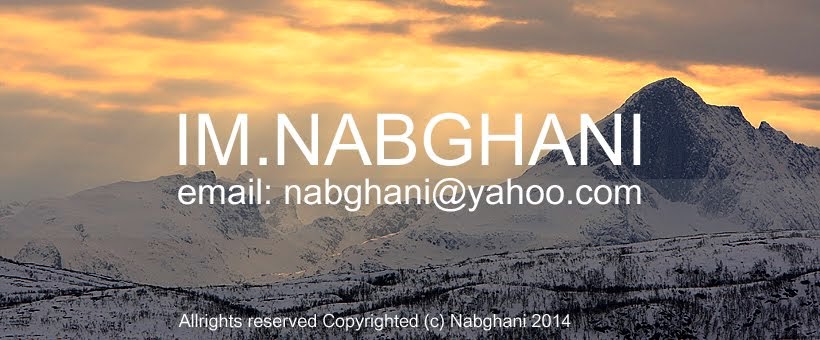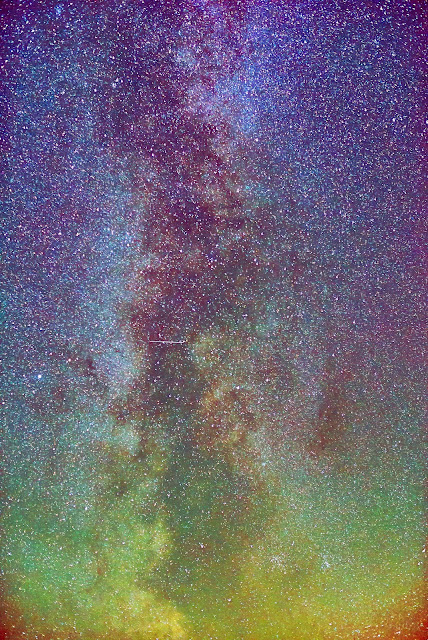Post processing astro photos can be a tiresome business. Depending on the activities of the cosmos during the night of the shot there can be many variations to the outcome. Clarkvision goes against the many conventional wisdom about post processing astro shots that you find in mainstream photography magazines and/or over the numerous sites on the internet.
"30 secs, f/2.8, Iso 6400, cool blue tungsten corrected night sky" are typical recommendations you find. Our man Clark is pretty adamant about how wrong these assumptions are and he's got sound scientific reasoning, detailed workflows and great images he's made himself to back it all up. If you have a resilient mind and strong desire to learn pop over to his domain : www.clarkvision.com
He broke many of my long held vision about how the nightsky should look like and along the way I learnt quite a few nifty things about astro post-processing from his website. Though I've been reading his websites for a couple of years I still have a small headache from trying to digest the points he's putting across. Don't do it in one go and be ready to blow your mind!
For a long time I always have intended to modify my Canon 40D and now 6D to get rid of the IR filter and get true reds from my astro shots just as I have seen them from many others on the forum. Then Clark came along ...
"30 secs, f/2.8, Iso 6400, cool blue tungsten corrected night sky" are typical recommendations you find. Our man Clark is pretty adamant about how wrong these assumptions are and he's got sound scientific reasoning, detailed workflows and great images he's made himself to back it all up. If you have a resilient mind and strong desire to learn pop over to his domain : www.clarkvision.com
He broke many of my long held vision about how the nightsky should look like and along the way I learnt quite a few nifty things about astro post-processing from his website. Though I've been reading his websites for a couple of years I still have a small headache from trying to digest the points he's putting across. Don't do it in one go and be ready to blow your mind!
For a long time I always have intended to modify my Canon 40D and now 6D to get rid of the IR filter and get true reds from my astro shots just as I have seen them from many others on the forum. Then Clark came along ...
"Modifying digital cameras is not necessary to obtain great astrophotos. Many stock cameras have good hydrogen-alpha response, e.g. recent Canon DSLRs. More important than a modified cameras is proper post processing methods that will bring out and not suppress hydrogen alpha emission, and cameras with good sensitivity and very low thermal dark current. The best digital camera for deep sky astrophotography that I have evaluated has good sensitivity, including hydrogen-alpha, and amazingly low dark current is the Canon 7D Mark II 20-megapixel digital camera. A great full frame digital camera for astrophotography is the Canon 6D 20-megapixel digital camera." - Clark
And what do you do know : I have both the 6D and the 7D Mk2!
And what do you do know : I have both the 6D and the 7D Mk2!
Original Raw Shot.
Raw processed in CaptureOne, tweaked in Photoshop.
Key differences (during Raw processing in CaptureOne) from previous post-processing are:
1. Tweak curves for RGB, Red, Green and Blue individually
2. WB 3800, Tint 1,1
3. Chromatic correction according to lens 20%
4. Highlight 50%, Shadow 50%
6. Luminosity 80%, Detail 20%, Color 20%
Further tweaking in Photoshop (PS12) are for these minor tweaks:
1. Adjust Colors : Hue 0% Saturation 40-60%, Lightness 0%
2. Adjust Color Curves : Increase Contrast
3. Adjust Lighting : Tweak to lighten or darken to taste
4. Resize Image (no sharpening done)
All these shots were taken with Sony A7S in combination with a Sigma Art 35/1.4 or Canon EF 50/1.2. I have some shots from the Canon 6D as well at the end for comparison. Canon 6D and 7D Mk2 were specifically mentioned by Clark as the best cameras for astrophotography, I didn't notice whether he made a mention of Sony A7S ... apparently Sony is a star eater according to some users.
I put through these Milkway shots from Maudal taken 23rd Aug 2017 with Canon 6D +EF 24/1.4 through the same paces of Raw post processing in CaptureOne and the remaining tweaks in PS12.
Different nights produce different atmospheric activities, it's great to be able to record these subtle differences in color. Airglows galore especially during those active nights, definitely better than just light pollution!
Further tweaking in Photoshop (PS12) are for these minor tweaks:
1. Adjust Colors : Hue 0% Saturation 40-60%, Lightness 0%
2. Adjust Color Curves : Increase Contrast
3. Adjust Lighting : Tweak to lighten or darken to taste
4. Resize Image (no sharpening done)
All these shots were taken with Sony A7S in combination with a Sigma Art 35/1.4 or Canon EF 50/1.2. I have some shots from the Canon 6D as well at the end for comparison. Canon 6D and 7D Mk2 were specifically mentioned by Clark as the best cameras for astrophotography, I didn't notice whether he made a mention of Sony A7S ... apparently Sony is a star eater according to some users.
I put through these Milkway shots from Maudal taken 23rd Aug 2017 with Canon 6D +EF 24/1.4 through the same paces of Raw post processing in CaptureOne and the remaining tweaks in PS12.
Different nights produce different atmospheric activities, it's great to be able to record these subtle differences in color. Airglows galore especially during those active nights, definitely better than just light pollution!

















No comments:
Post a Comment